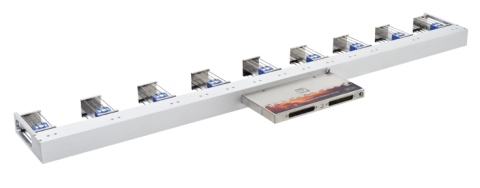Interested in the importance of temperature uniformity in your industrial ovens? Look no further than Reading Thermal for answers. We can help you bake your products to perfection.
Reading Thermal, headquartered in Sinking Spring, Pennsylvania, has focused on researching the commercial baking process for more than 25 years. We manufacture and support the state-of-the-art SCORPION® 2 Profiling System and Data Logger that has become a standard in the baking industry.
Why Uniform Temperature Matters
Oven temperature causes chemical and physical reactions in dough and batter. Temperatures that are too low or too high during baking can lead to changes in fermentation and humidity levels and undesirable changes in surface coloring, texture, and flavor.
If you manufacture bread, rolls, buns, cakes, biscuits, or similar bread products, you understand that several stages of the process are temperature-dependent, such as oven-spring, dehydration and drying, and color formation.
Too much heat from any direction in the oven can cause the bottoms of the loaves to burn before the crusts brown properly. An oven that is too cool typically produces a heavy and unappealing loaf with a pale or soft crust.
Why Profile Your Industrial Oven
The benefits of oven temperature profiling include:
- Quick troubleshooting
- Better product quality, texture and shelf life
- Greater productivity
- Lower energy costs
- Helps ensure food safety and FSMA compliance
- Efficient development of new processes
How to Measure Oven Temperature
The Reading Thermal SCORPION® 2 Temperature Sensor Array is designed to measure temperature at product level, in fixed positions across the conveyor, and delivers a true representation of what your product is experiencing over time.
There are 2 types of pluggable temperature sensors. One is an Air/Conveyor sensor that is designed to measure the surface temperature of the conveyor as well as the air temperature directly above the conveyor. This Sensor is designed for solid or tight mesh conveyors and measures air and band temperatures.
The other pluggable temperature sensor is an Air/Air sensor. It is designed to measure upper air temperature immediately above the conveyor, and lower air temperature of the air rising through the conveyor. It is meant for open mesh conveyors.
The sensor array is connected to the SCORPION® 2 Data Logger and then travels through the oven with the product, yielding a precise picture of temperature from side-to-side and end-to-end.
Product-core-temperature measurements can also be made simultaneously via the product probe inputs on the sensor array. This can be the difference between excellent quality and an under-baked or burnt product.
Get in touch with Reading Thermal to learn more about the importance of temperature uniformity in industrial ovens and how the SCORPION® 2 Profiling System can help you make adjustments that will achieve superior products. Contact us online or call us at (610) 678-5890 Ext. 2.

